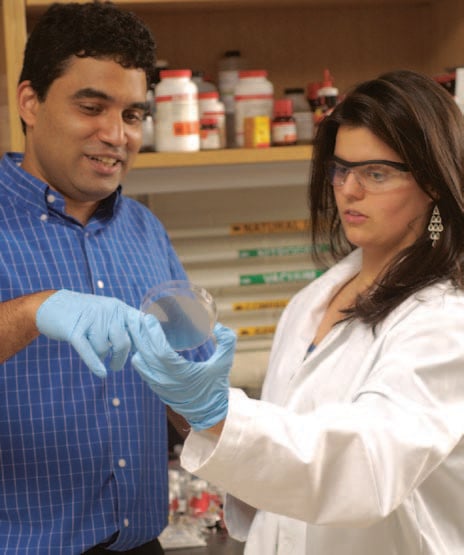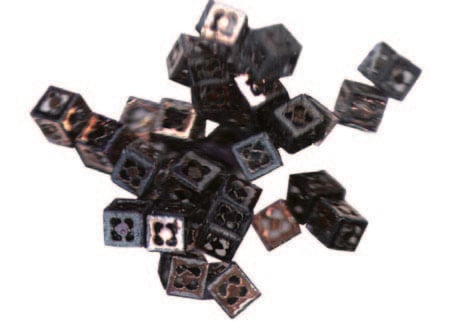
Some researchers spend decades trying to get their name on top of a scientific journal article. At 18, Emma Call already has her name on two. Call, who recently graduated from high school at the Baltimore Polytechnic Institute (Poly), was one of 10 winners in the prestigious Intel Science Talent Search for her work completed in the lab of David Gracias, an assistant professor of Chemical and Biomolecular Engineering at the Whiting School.
The annual competition, sponsored by Intel and dubbed the “Junior Nobel” because five winners have gone on to earn Nobel Prizes, recognizes the scientific achievements of high school students from across the nation. This year, Call was the only finalist from Maryland. The finalists attended a gala in Washington, D.C. in March, where Call learned she had placed 10th overall and was the highest placing student in the engineering category.
This year’s competition marked the third year in a row that a student from Poly, working with a faculty mentor from the Whiting School, was a finalist. In 2006, Poly senior Abe Davis earned seventh place for research conducted in the lab of then-Whiting School faculty member Jonathan Cohen. The year before that, Ryan Harrison achieved fifth place honors for work he did in collaboration with Jeff Gray, assistant professor of Chemical and Biomolecular Engineering. Harrison went on to enroll at the Whiting School as part of Johns Hopkins’ first group of Baltimore Scholars; he recently completed his sophomore year.
Through the Ingenuity Project, which aims to prepare highly motivated Poly students to succeed at nationally competitive levels in math and science, Call began working with her Hopkins faculty mentor before entering the Intel competition. Gray, who volunteers on Ingenuity’s Board of Directors, also contributes to the competition preparations. “We had all three of these students present their posters to students, staff, and faculty here on campus before going to the D.C. competition, and they even did mock panel interviews with faculty volunteers here,” he notes.
Call was recognized for her research in developing a new method to make nano-sized boxes in Gracias’ lab (see Johns Hopkins Engineer magazine, Summer 2006). These nano-cubes, smaller than a speck of dust, have the potential to deliver cells or drugs to targeted areas of the body. But making these boxes is difficult; engineering at such a small scale usually only takes place in two dimensions. So Gracias’ lab took an origami-based approach: the researchers built 2-D shapes that could then be folded into 3-D boxes.
Originally, Gracias used solder to connect the cubes at their hinges. But solder has to be melted at 450 degrees Celsius (842 degrees F). Because most biological materials cannot survive at that temperature, the cubes would have to be cooled before they could be filled— a difficult and time-consuming process, Gracias says. It would be much easier and more efficient if the drugs or cells could be put into the cube before it was folded.

Call suggested using polymer, which binds with objects at a biologicallyfriendly 45 degrees Celsius, instead of solder. The idea intrigued Gracias, so he and Call looked for a way to implement it. After months of trial and error, Call finally developed a working technique. As a result, her name appears as a co-author of two articles—one in Langmuir, published by the American Chemical Society, the other in Angewandte Chemie, published by the Society of German Chemists—describing the technique.
The nano-cubes that employ Call’s method aren’t ready for clinical application yet, says Gracias, but they demonstrate that his lab’s approach is a viable strategy. Call, whose Intel finish earned her a $1,000 cash prize, a $20,000 scholarship, and a new laptop, plans to study medicine and biochemistry at Case Western Reserve University in Cleveland and hopes to one day practice medicine.
Gray is optimistic that other Poly students will continue in the footsteps of Call, Davis, and Harrison by conducting award-winning research at Hopkins. “There are currently four Ingenuity students in labs here, with more to come this summer,” he says, adding that there are another eight non-Ingenuity students from Poly doing research at the Whiting School and the Krieger School. “The goal at Hopkins is to achieve excellence,” says Gray. “And this is our way to reach out to our community to help Baltimore City public school students do the same.”




